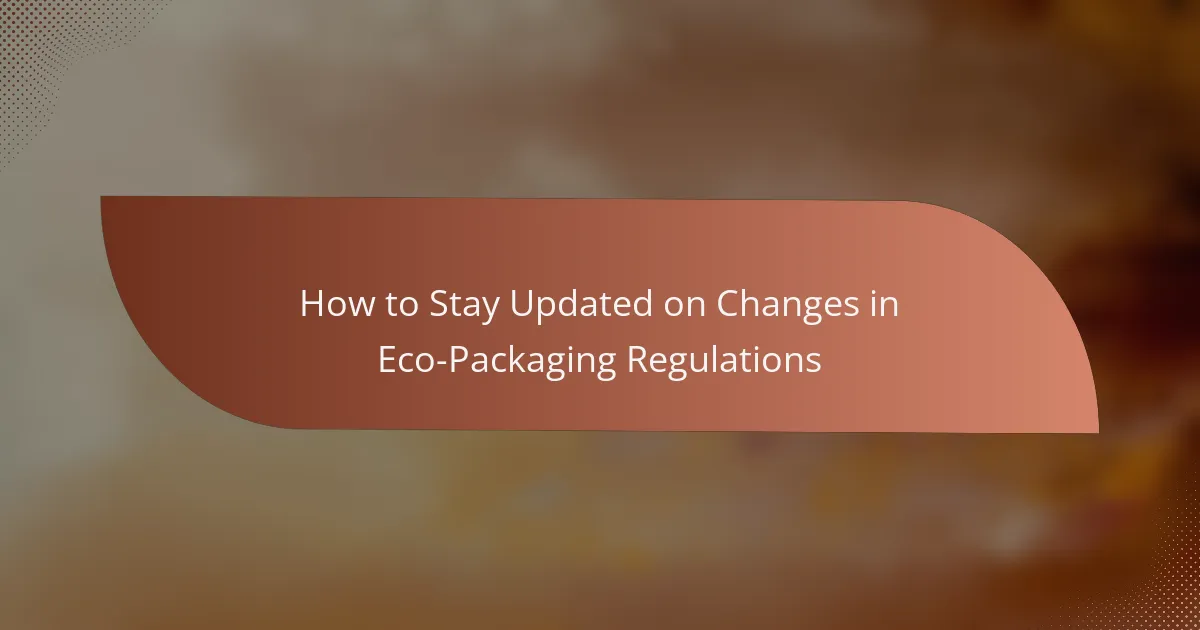Staying updated on eco-packaging regulations is essential for e-commerce businesses to remain compliant and competitive. By engaging with industry resources, such as newsletters, associations, and educational events, companies can effectively track changes and best practices. Key platforms, including government websites and environmental NGOs, offer valuable insights into legal requirements and emerging trends in sustainable packaging.
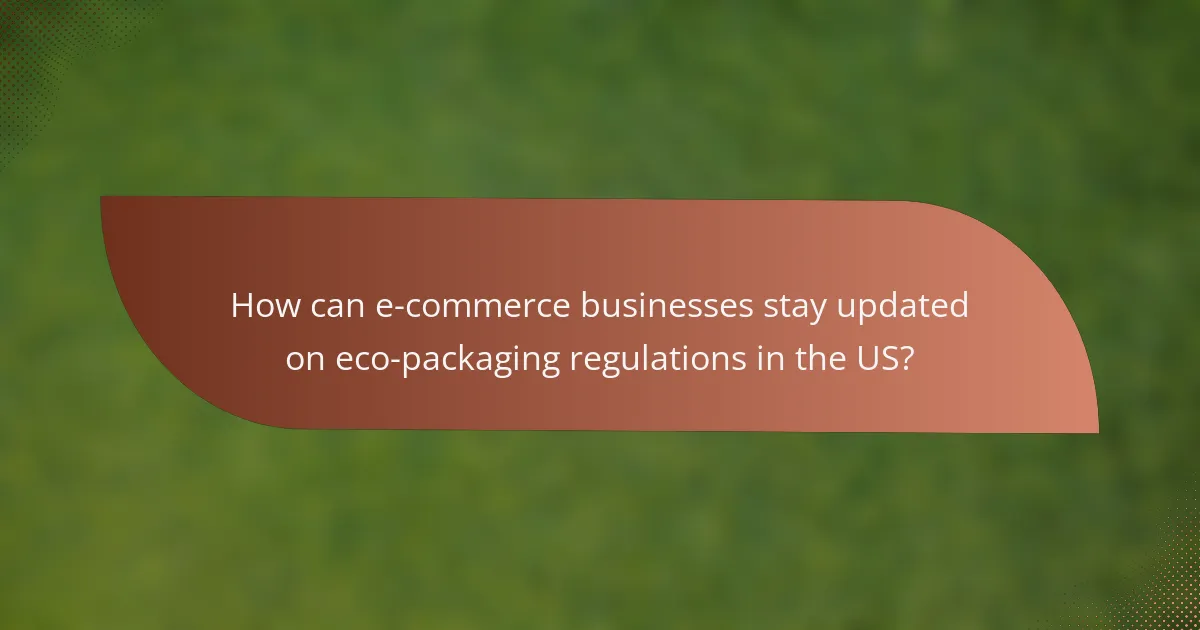
How can e-commerce businesses stay updated on eco-packaging regulations in the US?
E-commerce businesses can stay informed about eco-packaging regulations in the US by actively engaging with industry resources and communities. Utilizing newsletters, joining relevant associations, and participating in educational events are effective strategies to keep abreast of changes and best practices.
Subscribe to industry newsletters
Subscribing to industry newsletters is a straightforward way to receive timely updates on eco-packaging regulations. Many organizations and environmental groups publish newsletters that summarize recent changes, upcoming legislation, and best practices in sustainable packaging.
Look for newsletters from reputable sources such as the Sustainable Packaging Coalition or the Environmental Protection Agency (EPA). These newsletters often include expert insights and case studies that can help you understand the implications of new regulations for your business.
Join eco-packaging associations
Joining eco-packaging associations can provide valuable networking opportunities and access to resources that keep you informed. Organizations like the Sustainable Packaging Coalition or the American Institute for Packaging and the Environment offer members exclusive information on regulatory updates and industry trends.
Membership often includes access to webinars, reports, and forums where you can discuss challenges and solutions with peers. This community engagement can enhance your understanding of compliance and innovation in packaging.
Attend webinars and conferences
Participating in webinars and conferences focused on eco-packaging is an effective way to learn from experts and stay updated on regulations. These events often feature discussions on recent legislative changes, compliance strategies, and emerging trends in sustainable packaging.
Look for events hosted by industry leaders or educational institutions. Many conferences also offer networking sessions, allowing you to connect with other professionals who share similar interests and challenges in eco-packaging.
![]()
What are the key resources for tracking eco-packaging regulations?
Key resources for tracking eco-packaging regulations include government websites, environmental NGOs, and industry publications. These platforms provide updates on legal requirements, best practices, and emerging trends in sustainable packaging.
Government websites
Government websites are primary sources for official regulations and guidelines related to eco-packaging. In many countries, agencies like the Environmental Protection Agency (EPA) in the U.S. or the European Commission in the EU publish updates on packaging laws and compliance requirements.
Regularly checking these sites can help businesses stay informed about changes in legislation, such as new recycling mandates or restrictions on certain materials. Subscribing to newsletters or alerts from these agencies can ensure timely updates.
Environmental NGOs
Environmental NGOs often advocate for sustainable practices and can be valuable resources for tracking eco-packaging regulations. Organizations like Greenpeace or the World Wildlife Fund frequently publish reports and position papers that highlight regulatory changes and their implications for businesses.
Engaging with these NGOs can provide insights into upcoming legislation and trends in consumer preferences towards eco-friendly packaging. Many NGOs also offer webinars and workshops that can enhance understanding of compliance and sustainability practices.
Industry publications
Industry publications, such as Packaging World or Sustainable Packaging Magazine, provide news and analysis on eco-packaging regulations. These sources often feature expert opinions, case studies, and interviews that can help businesses navigate the regulatory landscape.
Subscribing to these publications or following them on social media can keep you updated on the latest developments and innovations in eco-packaging. Additionally, attending industry conferences highlighted in these publications can provide networking opportunities and insights into best practices.
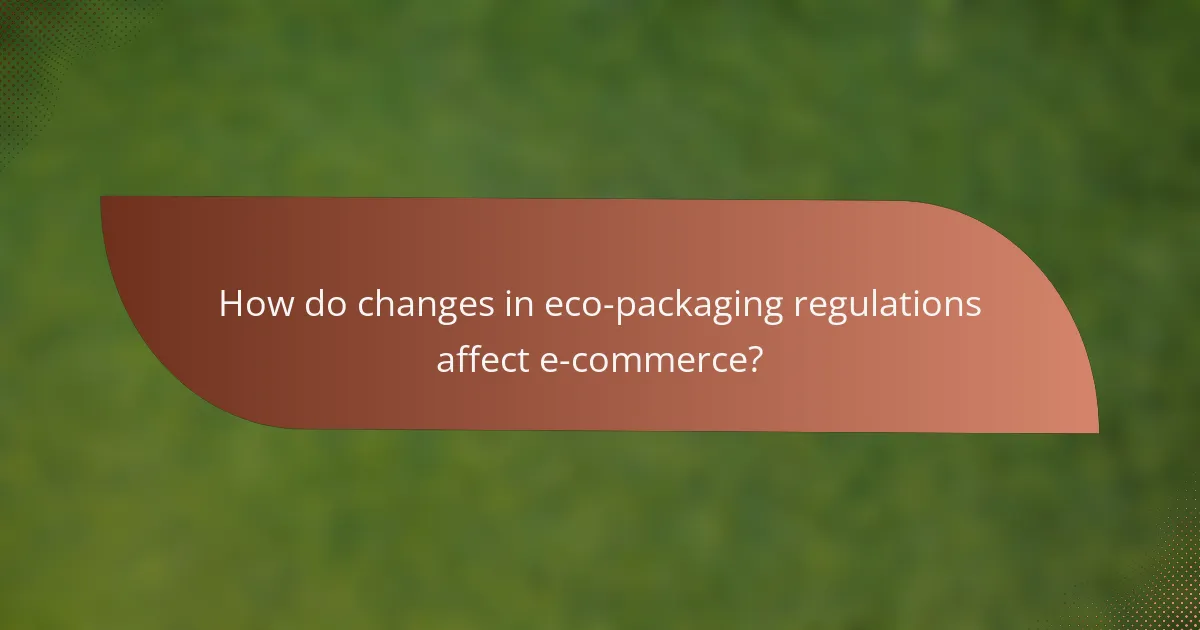
How do changes in eco-packaging regulations affect e-commerce?
Changes in eco-packaging regulations significantly impact e-commerce by altering packaging materials, compliance costs, and consumer expectations. Businesses must adapt to these regulations to remain competitive and meet legal requirements, which can affect their operational strategies and profit margins.
Impact on product packaging costs
New eco-packaging regulations often lead to increased costs for businesses as they transition to sustainable materials. For example, biodegradable or recyclable packaging options may be more expensive than traditional materials, potentially raising product prices by a small percentage. Companies should evaluate their supply chains to identify cost-effective sustainable alternatives.
However, investing in eco-friendly packaging can also yield long-term savings through reduced waste disposal fees and enhanced brand loyalty. Businesses might find it beneficial to conduct a cost-benefit analysis to understand the financial implications of switching to compliant packaging solutions.
Compliance requirements for shipping
Compliance with eco-packaging regulations requires e-commerce businesses to ensure that their packaging meets specific environmental standards. This may involve labeling requirements, documentation of material sources, and adherence to local recycling guidelines. Failure to comply can result in fines or shipping delays.
To navigate these requirements effectively, businesses should stay informed about local regulations and consider partnering with logistics providers who specialize in eco-friendly shipping practices. Regular training for staff on compliance can also help mitigate risks associated with non-compliance.
Consumer expectations for sustainability
As eco-packaging regulations evolve, consumer expectations for sustainability are rising. Shoppers increasingly prefer brands that demonstrate a commitment to environmental responsibility, which can influence purchasing decisions. Companies that adopt sustainable packaging practices may gain a competitive edge in the market.
To meet these expectations, businesses should communicate their eco-friendly initiatives clearly through marketing channels. Engaging customers with stories about sustainable practices and transparent sourcing can enhance brand reputation and foster customer loyalty.
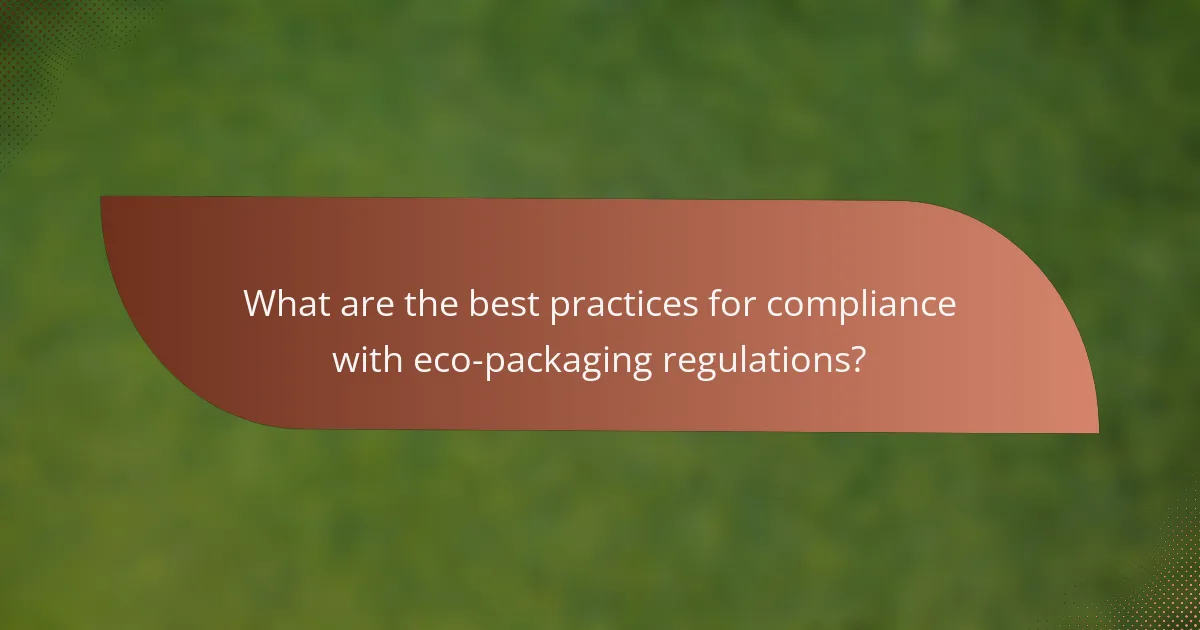
What are the best practices for compliance with eco-packaging regulations?
To comply with eco-packaging regulations, businesses should adopt a proactive approach that includes regular assessments, sustainable materials, and staff training. These practices help ensure adherence to evolving standards and promote environmental responsibility.
Conduct regular audits
Regular audits are essential for maintaining compliance with eco-packaging regulations. These evaluations should assess current packaging materials, processes, and supplier practices to identify areas for improvement. Aim to conduct audits at least annually or whenever significant changes occur in regulations or business operations.
During an audit, create a checklist that includes evaluating packaging waste, recycling rates, and compliance with local regulations. This systematic approach helps pinpoint non-compliance issues and facilitates timely corrective actions.
Implement sustainable packaging solutions
Adopting sustainable packaging solutions is critical for compliance with eco-packaging regulations. Focus on using materials that are recyclable, biodegradable, or made from renewable resources. For instance, consider switching from plastic to paper or plant-based materials, which are often more environmentally friendly.
Evaluate your packaging suppliers to ensure they align with sustainability goals. Collaborating with vendors who prioritize eco-friendly practices can enhance your compliance efforts and improve your brand’s reputation among environmentally conscious consumers.
Train staff on compliance
Training staff on eco-packaging compliance is vital for fostering a culture of sustainability within your organization. Develop training programs that inform employees about relevant regulations, company policies, and best practices for sustainable packaging. Regular workshops or online courses can be effective methods for delivering this information.
Encourage employees to ask questions and share insights on packaging practices. This engagement not only enhances compliance but also empowers staff to contribute to sustainability initiatives actively.
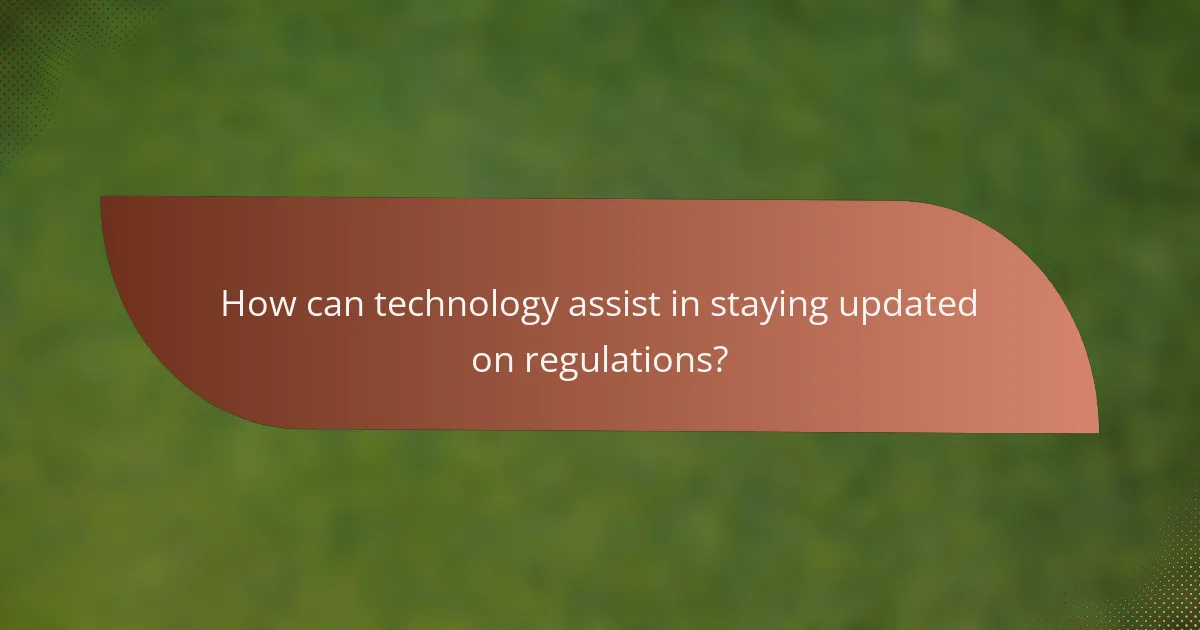
How can technology assist in staying updated on regulations?
Technology plays a crucial role in keeping businesses informed about changes in eco-packaging regulations. By leveraging various digital tools, companies can streamline their compliance efforts and stay ahead of regulatory updates.
Regulatory tracking software
Regulatory tracking software helps organizations monitor changes in eco-packaging laws and standards. These tools often aggregate information from multiple sources, providing users with real-time updates and alerts about relevant regulations.
When choosing regulatory tracking software, consider features such as customizable alerts, user-friendly interfaces, and integration with existing systems. Popular options may include platforms that focus on specific regions, ensuring compliance with local laws, such as those in the EU or North America.
AI-driven compliance alerts
AI-driven compliance alerts utilize machine learning algorithms to analyze vast amounts of regulatory data and identify changes that may impact businesses. These systems can automatically notify users about relevant updates, allowing for timely adjustments to packaging practices.
To maximize the effectiveness of AI-driven alerts, ensure the system is tailored to your industry and regulatory landscape. Regularly review and adjust the parameters of the alerts to capture the most pertinent information, helping to avoid potential compliance pitfalls.
